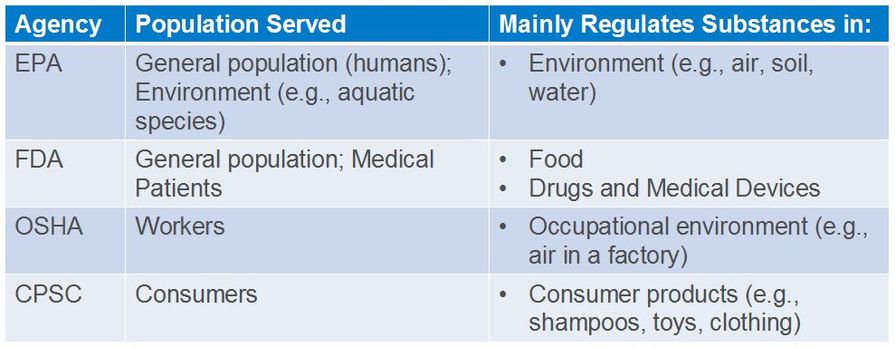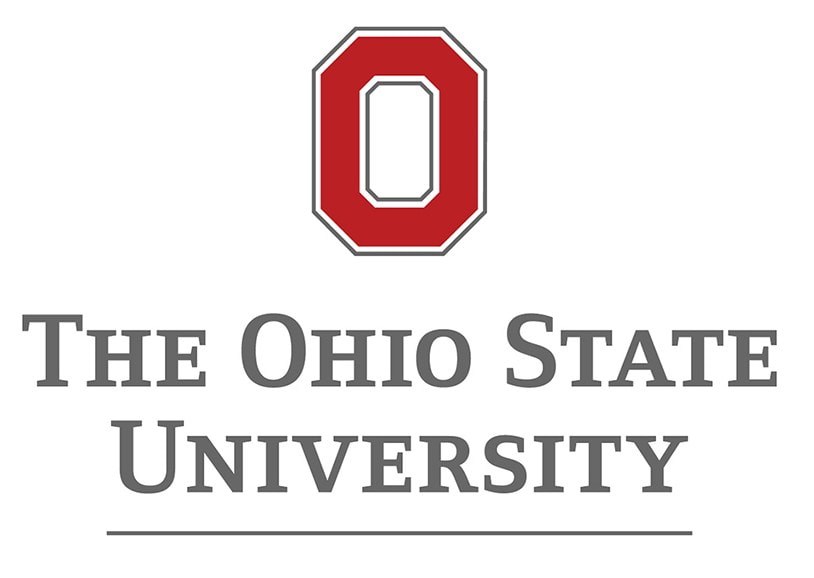Topic 4: National Regulatory Toxicology
LEARNING OBJECTIVES
After completing this lesson, you will be able to:
After completing this lesson, you will be able to:
- Define what is meant by “National Regulatory Toxicology”.
- Give an example of a national regulatory regulation.
What is National Regulatory Toxicology?
- Focuses on regulatory toxicology at the national level (e.g., United States, Canada, China).
- Regulations are set by authorities that apply for the entire country.
- Focus on the United States (US):
-All states within the US must comply with federal regulations.
- Example agencies that set national toxicology regulations in the U.S.:
Environmental Protection Agency (EPA )
Food and Drug Administration (FDA )
Occupational Safety and Health Administration (OSHA)
Consumer Product Safety Commission (CPSC)
- All agencies aim to set regulations to protect against adverse health effects from exposure to substances.
- Different agencies regulate on different types of substances, that are used for different purposes and affect different populations.
- Goal of EPA: To protect human and environmental health; deals with exposures to substances in the environment (e.g., air, water, soil).
- Typically, pertains to exposures that the general population generally does not have control over (e.g., air pollution).
- Modernizing chemical regulation in the US: Recently revised the Toxic Substances Control Act (TSCA)
TSCA first passed in 1976.
TSCA revised with passage of the Frank R. Lautenberg Chemical Safety for the 21st Century Act in 2016.
Regulates new or already existing chemicals manufactured or in use in the US.
Topic 4: Key Points
In this section, we explored the following main points:
In this section, we explored the following main points:
- What is National Regulatory Toxicology?
- Examples of National Agencies in the U.S.
- What do these Agencies regulate?
- Highlight: EPA and TSCA Reform.





